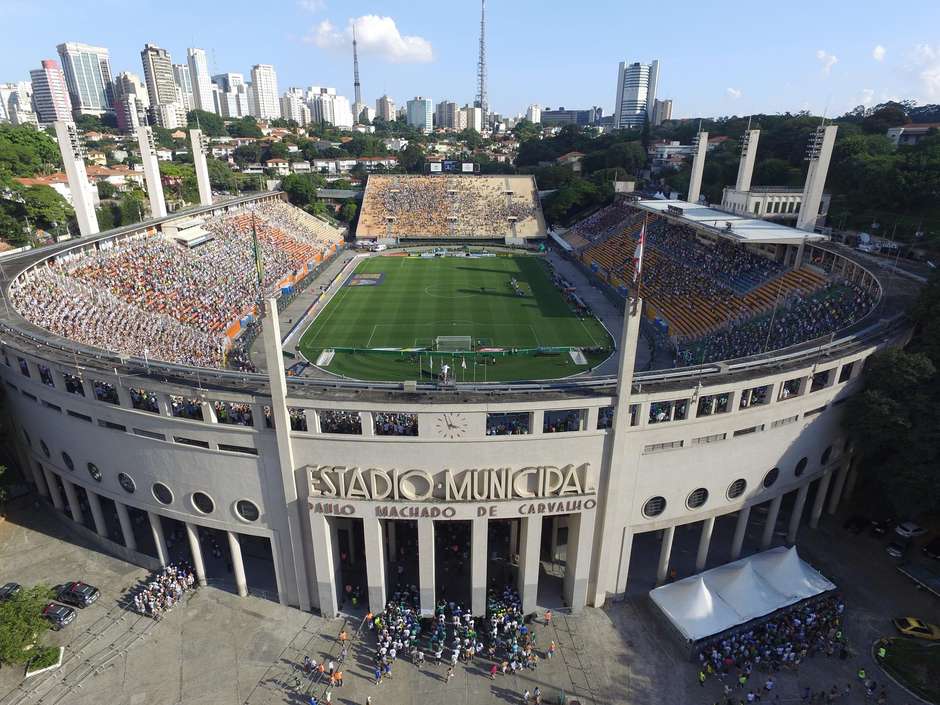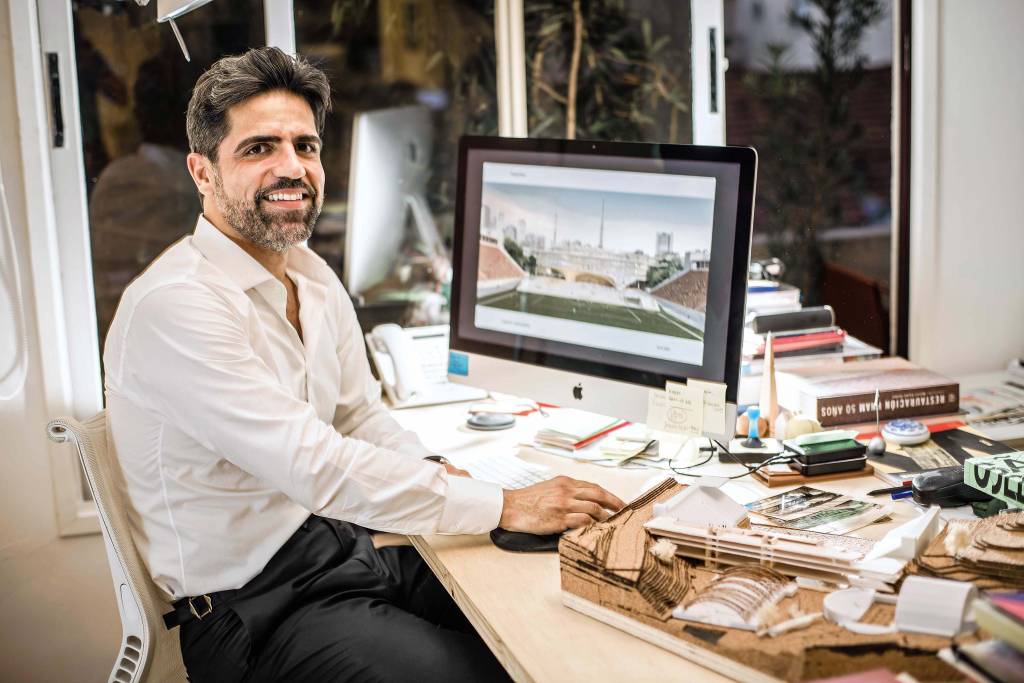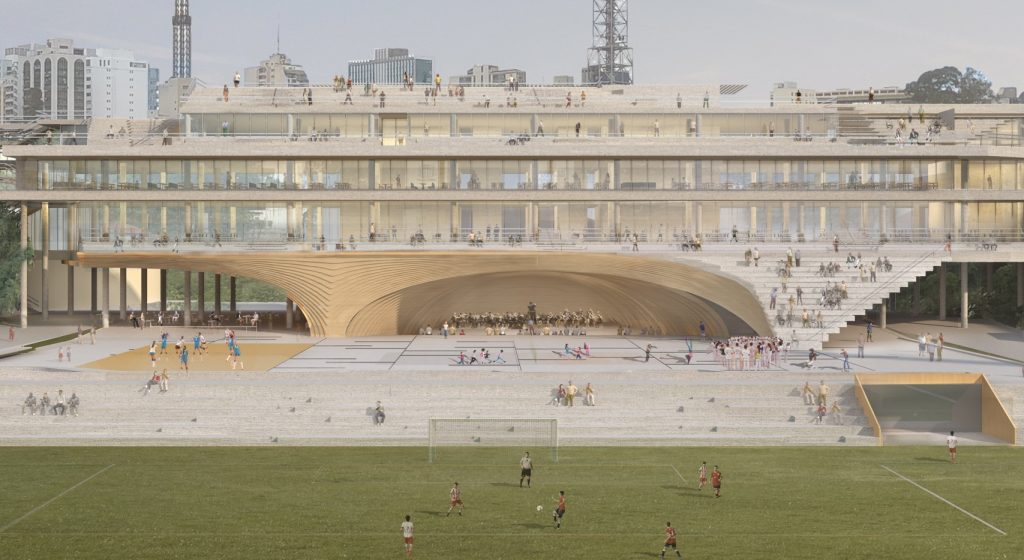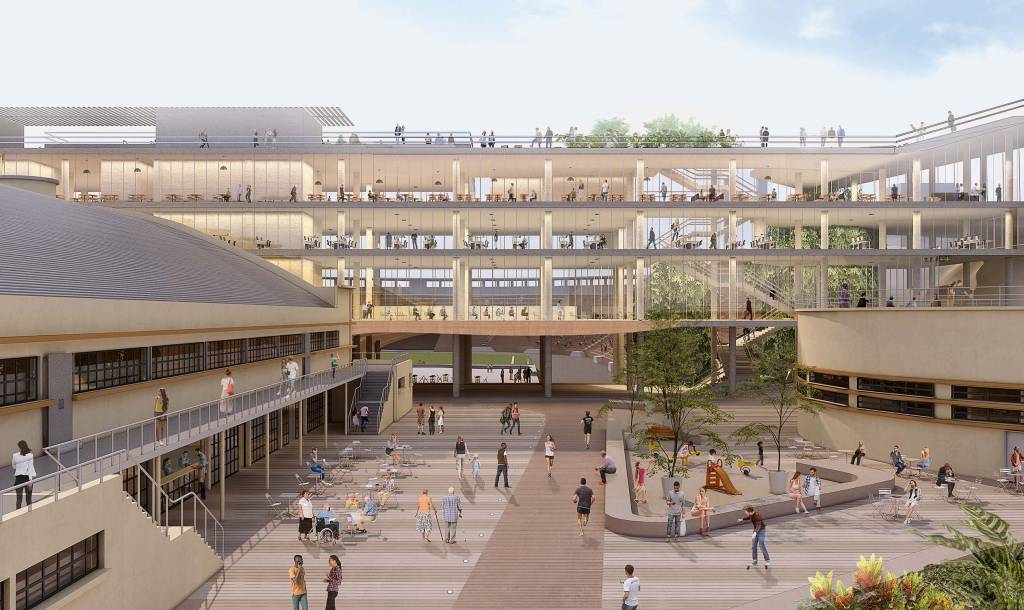RIO DE JANEIRO, BRAZIL – Inaugurated in April 1940, the Pacaembu stadium will undergo the most dramatic renovation in its history starting in the second half of next year.

The person in charge of managing it will be businessman Eduardo Barella, 38, director-president of the engineering company Progen and president of the consortium Allegra Pacaembu, who won the tender to manage the stadium for the next 35 years.
Two of the stadium’s symbols, the toboggan and the cement grandstands, will disappear. The toboggan, erected in 1970 in place of the acoustic shell, is usually the area for the lowest income fans. It will be demolished to make way for a building with shops, restaurants, an event center, and a parking lot.
Sociologist Gabriel Cohn, a retired professor at the University of São Paulo, told his students that a testimony of knowledge of Brazil was “trouser bottoms worn out by the cement in the grandstands”. This will no longer be the case in Pacaembu, whose grandstands – which today are populated by organized fan support groups – will be completely covered with chairs.
On major match days, the stadium is expected to receive temporary structures to increase capacity.
When it is delivered in 2022, Pacaembu will be greatly changed. If Barella’s strategy is successful and the landmark entities allow interference in the fallen wall of the stadium, the Pacaembu will have restaurants facing the street, promoting, in his view, greater interplay between the internal space and the routine of passers-by.
To the criticism that Allegra’s project follows a shopping logic, closed to the city, Barella answers that it is no use having a “very beautiful” project without financial balance. “Ours will be an operational success and will bring the population inside.”

What has become best known about Allegra’s proposal is the multi-use building. What will the structure be like?
Eduardo Barella: We understand that we will get it right the more we retain the initial design of the project. Pacaembu was inaugurated in the 1940s as a gift from City Company to the municipality. And City sold the plots using Pacaembu as a decoy: ‘buy your plot in this magnificent neighborhood and enjoy this complex of culture, sports and leisure’.
Pacaembu has an architectural project of rare fortune, harnessing the valley, and it lasted until the 1970s when the government authorized the demolition of the acoustic shell and the construction of the toboggan. At that moment, the pillars of culture and leisure died and the complex was focused on sports, basically soccer.
Our purpose is to erect this building while maintaining the uniqueness of the 1930s project with more current uses. We intend to have a building that can accommodate several uses, from offices to gastronomy, bars, and entertainment.
This building will be in the place of the toboggan, where the fans who buy the cheapest tickets are concentrated. Can this not lead to the elitization of the stadium?
Not at all. Pacaembu, today, holds 37,000 people, but the average attendance is 15,000. The stadium, even after the demolition work, will hold around 26,000 people. We will have a greater capacity than the average attendance of the stadium. It is perfectly possible for us to continue to host the public who attend the toboggan. What we are going to do is make the stadium more democratic.
Today, anyone who wants to use soccer as a business, who wants to be able to have their own box, to make sports something that can enhance their business, has no space. There is no parking space, you come in the rain, there is no hospitality area. Let’s embrace both audiences. Soccer does not exist without the lower-income supporters.
The decrease in public seating capacity with the end of the toboggan would make it impossible to use Pacaembu in some competitions’ games. From the semifinal match on, for instance, Libertadores requires seating capacity of at least 30 thousand. Are you thinking about alternatives?
We believe it is possible to have a provisional structure of stands that can be set up on our terrace for more important games. That would increase the capacity by 6,000 or 7,000 seats, and we would have a stadium with about 32,000 seats.

What works do you intend to do in the grandstands?
We intend to change all the chairs in the stadium, we will build toilets, which are now a huge deficiency, we will change the entire press area and build a gastronomy and box area to welcome the public on match days. We will install chairs in sectors that do not have chairs. It will become an entire stadium with chairs.
When will the stadium be closed and for how long?
In an optimistic scenario, we will close it in July 2020. In a pessimistic scenario, in October. It will be inaugurated within 28 months from the closing date. In an optimistic scenario, in mid-2022, in the pessimistic, late 2022.
Architect Mauro Munhoz, the designer of the Soccer Museum project, said that your design contradicts the stadium’s original concept and that the accessibility of Pacaembu to the neighborhood will be impaired.
I don’t agree that there is no accessibility. In a public tender like this, there are rules. If you ask me if the bid invitation is the best that could have been done, I will say no. I think Charles Miller Square should be part of the concession and the façade should be allowed to change. The whole stadium is closed and it arouses disaffection among the public. When you have that accessibility, you can get the public inside, which is the challenge.
The Soccer Museum is great from an architectural point of view but terrible in terms of operation. You have to leave the museum to go into a store, enter a food area, and you end up not having a return. There’s no point in having a very beautiful project if you can’t manage it.
I’m used to operating projects and I’m sure ours will be an operational success and will bring the population inside.

You have already mentioned improvements to suggest to the landmark entities, CONPRESP and CONDEPHAAT. What would they be?
The issue of the façade [the wall that delimits the stadium] is something to be discussed. We could, for instance, use the stadium’s food court and open it up to the field on match days and open it up onto the streets on days when there are no matches.
If foreigners pass by Pacaembu they think there is a prison there and not a wonderful football stadium. This façade should be reconsidered. It’s not just a visual problem, it’s an urban impact problem. Just keeping gate 23 open can cause traffic problems. The discussion of new entrances will need to take place.
What will be the profile of the convention center events in this building and in the stadium?
We have been thinking of 250 events per year. We want to host conventions from companies: doctors, financial markets, vehicle launches, and related things. Even graduation parties, weddings, vehicle releases. Today, convention centers are at the far reaches of the city. The best-located ones are outdated. It’s something the city lacks.
Will the club’s facilities, such as courts and swimming pools, remain open for public use?
We want to extend Pacaembu’s hours of use. Both the pool and the tennis and multi-sport gymnasium will remain as public spaces used in the current arrangements. We intend to have extended hours on Thursdays, Fridays, and Saturdays.
How will the stadium support itself financially?
The stadium has some revenue lines. The main one is for events and entertainment (50 percent of the revenue). Then, soccer and other sports (18 percent). The third is the rental of floors (17 percent). And then, parking, drinks, and sponsorship. It’s a very widespread revenue, a balanced project, which provides us with great stability as investors.
Source: Folhapress

